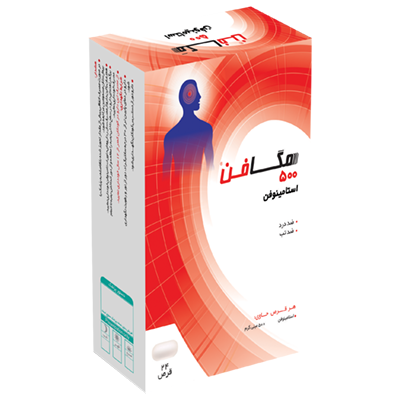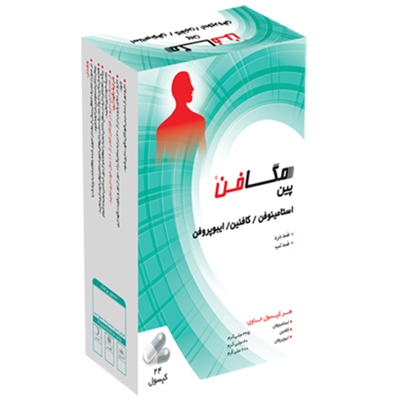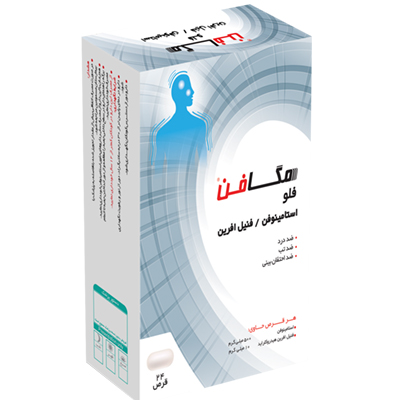Amidst the delicate skin of babies and children, diseases sometimes creep in that affect not only the body but also the psyche of the family. Psoriasis in infants is a chronic and bothersome inflammatory skin disorder that can begin in infancy. Although it is more commonly known as an adult disease, children can also fall victim to the annoying symptoms of this disease.
Psoriasis in children and infants is an autoimmune disease in which the body's immune system mistakenly targets skin cells, leading to an accelerated cell turnover cycle. The result is dry, thick, scaly plaques on the skin's surface.
Types of psoriasis in infants and children
The skin disease psoriasis in children is one of these chronic and mysterious disorders that begins with a deceptive appearance and sometimes persists for years. Psoriasis in children, unlike in adults, can have an unusual appearance. Lesions may appear in the diaper area, on the head, or even in hidden places. These clinical differences make the diagnosis process more difficult and increase the need for specialized knowledge on the part of parents and doctors.
A thorough understanding of the types of psoriasis in infants and children is essential for diagnosis, prevention of disease progression, and selection of the appropriate treatment approach. Here are some of the most common types of this condition:
- Guttate psoriasis: Usually appears following a streptococcal infection and is more prevalent in children.
- Plaque psoriasis: With red, scaly lesions, it can be seen in the joints or scalp; especially in scalp psoriasis in children.
- Inverse psoriasis: Affects the creased areas of the body and is sometimes confused with dermatitis.
- Pustular psoriasis: A rare but severe type, with pus-filled blisters that appear along with severe inflammation.
- Erythrodermic psoriasis: Not common but can be life-threatening; with widespread redness of the skin and severe peeling.
In another article, it is comprehensively discussed in 10 Type of psoriasis It has been discussed, from the most common to the rarest. If you want to know which type is more dangerous to your health and how to identify it, we recommend that you read this article.
Clinical differences in psoriasis in infants and children
Psoriatic skin lesions in infants and children often develop in the diaper area, where we would normally expect diaper rash. For this reason, psoriasis symptoms in children of this age are easily confused with diaper dermatitis. The main differences, however, lie in the nature of the rash, the persistence of the lesions, and the poor response to common diaper rash treatments.
In contrast, psoriasis in older children often presents with a different pattern. Clear, hard, and well-defined lesions appear on the elbows, knees, behind the ears, or even the palms of the hands and feet. Scalp psoriasis in children is a particularly common and challenging form, with severe scaling and persistent itching that can be mistaken for dandruff or seborrheic dermatitis.
Recognizing these differences not only helps in correct diagnosis, but also prevents treatment errors and prolongation of the disease. Psoriasis in young children affects not only the skin, but also the psyche of the child and the family. Lack of adequate knowledge of the external symptoms and clinical similarity with other skin diseases causes delay in treatment and exacerbation of symptoms.
Psoriasis symptoms in children and adults can vary, both in severity and location. In another article, we will discuss them in detail. Symptoms of psoriasis in adults We have briefly explained the differences between these cases below:
| Feature | Children | Adults |
| More common type | Guttate psoriasis is often | More plaque psoriasis |
| Place of initial occurrence | Face, scalp, skin folds (such as armpits and groin) | Elbows, knees, scalp, back |
| Severity of peeling | It may be milder. | Usually more intense and specific |
| Appearance of lesions | May be less pronounced or resemble eczema | Red lesions with thick silvery scales |
| Diagnosis | More difficult due to similarities with other skin conditions such as eczema | Easier due to the classic features of the disease |
| Itching | Usually more and more annoying | In some cases, less than children |
| Nail involvement | Less commonly seen | It is more common. |
| Psychological impact | Profound impact on a child's self-confidence | Psychological problems related to skin appearance and work and social stress |
Causes of psoriasis in children
When silvery lines and dry patches appear on a child's skin, a troubling question plagues parents' minds: Why? Psoriasis symptoms in children may appear suddenly and persist with varying degrees of severity, but their origins are often rooted deep in genetics, immunity, and environmental factors.
Psoriasis in children, unlike many other skin conditions, is an autoimmune disorder that causes the skin to overproduce cells. The result is a buildup of dead cells, inflammation, redness, and chronic scaling. But what sets this process in motion is a complex combination of internal and external factors that must be carefully considered.
A significant number of children with juvenile psoriasis have a family history of the disease. Mutations in certain genes predispose to the disease, but genetics alone are not enough. Triggers such as streptococcal infections, psychological stress, skin trauma, hormonal changes, and even certain medications can play a role in the initial onset or exacerbation of the skin disease psoriasis in children.
Psoriasis in infants, although rarer, may begin with severe diaper rash. The moist, tight diaper conditions can be one of the primary triggers of the disease in this age group. In this age group, diagnosis is often difficult, as it closely resembles diaper dermatitis. In general, the causes of this condition can be the following:
- Family history of psoriasis (genetics)
- Abnormal activity of the immune system (autoimmunity)
- Bacterial infections, especially strep throat
- Severe mental and emotional stress
- Skin trauma or injury (Koebner phenomenon)
- Prolonged exposure to dry or cold air
- Taking certain medications (such as beta-blockers or lithium)
- Obesity or overweight in children
- Impaired skin barrier function
- Chronic allergies or skin sensitivities
- Immune defects or congenital immunodeficiency
- Unhealthy diet and vitamin D deficiency
- Frequent exposure to chemicals or detergents
- Recurrent viral infections in childhood
- Family history of allergies or atopic dermatitis
- Lack of adequate sleep and irregularity in the child's circadian rhythm
20 Ways to Diagnose Psoriasis in Children
Early and accurate diagnosis of psoriasis in children is the starting point for effective treatment and symptom control. Since many of the symptoms of psoriasis in children overlap with other skin conditions such as eczema, seborrheic dermatitis, or skin allergies, accuracy in the diagnostic process is of great importance. A careful clinical examination, along with consideration of family history and general skin condition, can prevent many common mistakes. Common methods for diagnosing psoriasis in infants and children:
- Clinical examination of the skin and skin lesions by a dermatologist
- Taking a detailed family history (genetic history)
- Differentiating from other skin conditions (such as eczema and fungal infections)
- Skin biopsy (taking a sample of a lesion for examination under a microscope)
- Physical examination of common areas of occurrence (elbows, knees, scalp, behind the ears)
- Check for nail lesions (grooves, white spots, separation of the nail from the bed)
- Koebner test (examination of the occurrence of a lesion after a mild injury to the skin)
- Observe the body's response to initial moisturizing or anti-inflammatory treatments (failure to improve can be a sign of psoriasis in children)
- Medical imaging (in rare cases to examine joints if there is associated joint pain or inflammation)
- Check for recent infections, such as strep throat (which can trigger guttate psoriasis)
- Assessing the child's psychological symptoms and recent stress
- Evaluation of the body's immune status (in certain cases with immunological tests)
- Ruling out the possibility of a drug reaction (checking the history of taking specific medications)
- Allergy tests to rule out similar skin allergies
- Checking the general condition of the child's skin in unusual areas (palms, feet, abdomen)
- Comparative comparison of lesions with standard clinical images of psoriasis
- Clinical interview with parents to track the course of the disease and severity of symptoms
- Studying the pattern of lesion occurrence after contracting viral diseases
- Scalp examination in cases of suspected scalp psoriasis in children
- Visiting a specialized pediatric dermatology clinic for more advanced examinations
Finally, despite the variety of diagnostic methods, it should be emphasized that the best and safest way to accurately diagnose a variety of diseases, including pediatric psoriasis, is to undergo the necessary examinations and tests under the supervision of a dermatologist and pediatrician. Only an experienced specialist can provide a reliable diagnosis and outline an appropriate treatment path by properly understanding the child's symptoms, family history, and clinical conditions. Self-medication or reliance on non-specialist diagnoses should be avoided, as delay in diagnosis can lead to disease progression and difficulty in controlling it.
19 Ways to Treat Psoriasis in Children
The skin condition psoriasis in children not only affects the appearance of the skin, but also affects the child's self-confidence. When symptoms of psoriasis appear in children—from red patches to persistent itching—parents are faced with a flood of concerns. This chronic disease has no cure, but fortunately, it can be controlled and managed in several ways.
Sometimes the affected areas, such as scalp psoriasis in children, progress so much that even combing the hair becomes painful. For each stage of psoriasis in children, a suitable and specialized method is considered, depending on the severity, type, and location of the involvement. Introducing ways to treat psoriasis in children:
- Use of topical anti-inflammatory ointments (corticosteroids)
- Specialized moisturizers to prevent dryness and flaking
- Medically supervised UVB light therapy
- Systemic medications in severe or treatment-resistant cases
- Biologics for resistant or widespread forms of the disease
- Dead Sea salt baths to reduce inflammation and itching
- Limiting environmental stressors and teaching the child relaxation skills
- Using therapeutic shampoos for scalp psoriasis in children
- Modifying your diet and reducing your intake of inflammatory substances such as sugar and trans fats
- Daily skin care and avoiding irritating soaps
- Child psychology counseling to reduce the psychological effects of the illness
- Checking for and treating underlying infections, such as strep throat
- Prescribing vitamin D or anti-inflammatory supplements as directed by your doctor
- Using cold compresses to reduce local irritation and inflammation
- Avoiding physical irritations, such as scratching or wearing rough clothing.
- Combined treatment with consultation from a multidisciplinary team (dermatologist, nutritionist, psychologist)
- Educating parents on proper care at home and recognizing warning signs
- Regular follow-up of the disease status by periodically visiting a dermatologist
- Establish a regular sleep routine to increase skin repair at night.
- Avoiding medications or compounds that may aggravate the disease
Choosing the most effective and safest treatment method is only possible with the diagnosis of a specialist physician; a diagnosis that will be based on careful observation, continuous monitoring, family history review, and necessary clinical tests. Smart and responsible treatment is the beginning of a safe path to controlling psoriasis in children and infants.
Conclusion | Everything you need to know about psoriasis in infants and children
Psoriasis in infants and children is a chronic skin disease that requires scientific, specialized, and multidisciplinary attention for proper diagnosis and management. The symptoms of this disease may be deceptive and may be confused with other skin problems at an early age, which can delay diagnosis and, consequently, effective treatment.
The role of parents in recognizing the symptoms of psoriasis in children and taking timely action to see a dermatologist is crucial. On the other hand, scalp psoriasis in children or lesions in the folds of the body may have a significant psychological impact on the child and lead to a decrease in his self-confidence. This highlights the importance of comprehensive treatment; treatment that is not limited to improving the appearance of the lesions but also includes physical, mental and psychological dimensions.
Although the treatment of this disease is not definitive, it can be well controlled with modern methods, including biological drugs, phototherapy, lifestyle modification, and psychological counseling. In the meantime, it is emphasized that parents should not resort to self-medication and that all treatment measures should be carried out under the supervision of a specialist physician. Only scientific diagnosis and targeted treatment can improve the quality of life of a child with psoriasis.
If you would like to know more about it in full detail, What is psoriasis and its causes, symptoms and treatment methods? To learn more about it, you can read this article to get comprehensive and useful information. This resource will help you better understand the disease and find ways to deal with it.




